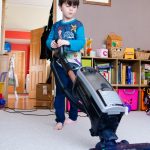“How to Advocate for Your Child in IEP Meetings (Without Feeling Overwhelmed)” is a collaborative post.
If you’ve ever walked into an IEP (Individualized Education Program) meeting and felt your stomach twist into knots, you’re not alone.
Between the education jargon, long documents, and a table full of professionals, these meetings can feel intimidating — even though you are the expert on your child. The truth is, advocating for your child doesn’t have to mean being combative or memorizing every policy in the handbook. It’s about preparation, confidence, and remembering that you are your child’s voice in the room.
Here are five powerful questions to ask before and during your next IEP meeting — plus some tips to help you walk out feeling confident instead of overwhelmed.
1. “Can you explain that in plain language?”
Schools often have their own vocabulary — “FAPE,” “LRE,” “accommodations,” “pull-out services,” and so on. It’s okay (and encouraged) to stop the meeting and ask for terms to be explained in simple language.
By doing this, you’re not only making sure you understand the plan, but you’re also setting the tone that you’re an active participant, not a passive observer. You should never leave an IEP meeting unsure about what was decided or why.
Pro tip: Write down terms or acronyms you don’t know beforehand so you can ask about them early in the meeting.
2. “How will progress be measured and shared?”
IEPs aren’t just about setting goals — they’re about making sure those goals are trackable. Ask exactly how your child’s progress will be measured. Will it be through daily data collection? Teacher observations? Standardized assessments?
Just as importantly, ask when and how often you’ll receive updates. If you have to wait until the next IEP meeting to find out your child hasn’t been making progress, valuable time is lost. Request updates in a format that works for you — whether that’s a quick email summary, a weekly note home, or a shared digital document.
3. “Can we see examples of what this looks like in practice?”
It’s one thing to hear that your child will receive “speech therapy twice a week.” It’s another to know exactly what those sessions will include. Ask to see examples or even observe a similar session if the school allows.
By understanding what strategies are being used, you can support those same skills at home, creating consistency between school and your home environment.
If something sounds vague or unclear, don’t hesitate to ask for concrete examples. The more specific the plan, the better.
4. “What’s the plan if my child isn’t meeting goals?”
It’s not uncommon for a child’s needs to change over the course of the school year. Instead of waiting for the annual review, ask upfront what will happen if progress isn’t being made.
Will the team adjust the goals? Provide additional support? Change the teaching approach? Knowing that there’s a proactive plan in place can give you peace of mind — and helps you avoid long stretches of time where your child’s needs aren’t being fully met.
5. “How can I best support this at home?”
IEP goals aren’t meant to live only inside the classroom. Asking this question shows that you’re invested in your child’s success beyond school hours.
This is where you can bring in resources like sensory tools, communication supports, or structured play activities. For example, if your child is working on fine motor skills at school, practicing with specific toys at home — like building blocks, threading beads, or adapted puzzles — can help reinforce those skills.
A Quick Word on “Toys for Autistic Children”
When we talk about supporting IEP goals at home, toys and play aren’t just about fun — they’re powerful learning tools. The best toys for autistic children often engage multiple senses, promote communication, or encourage problem-solving.
For example:
- Sensory bins for calming and focus.
- Visual matching games to build cognitive skills.
- Cause-and-effect toys (like pop-up boxes or switch-activated toys) to encourage engagement.
- Pretend play sets to help develop social interaction skills.
If you’re not sure which toys might help with your child’s IEP goals, ask your child’s special education teacher or therapist for recommendations. This way, playtime becomes a natural extension of learning.
How to Prepare So You Don’t Feel Overwhelmed
IEP meetings can feel less intimidating when you walk in with a plan. Here are a few ways to prepare:
- Review the current IEP in advance. Highlight anything you don’t understand or want to discuss.
- Bring notes and examples. If you’ve noticed progress (or challenges) at home, share them.
- Have a support person. A spouse, friend, or advocate can take notes so you can focus on the discussion.
- Stay organized. Keep a binder or folder with all IEP documents, emails, and progress reports.
Remember: You Belong at the Table
It’s easy to feel like you’re outnumbered or out of your depth in an IEP meeting — but you are the expert on your child. The teachers, specialists, and administrators bring their professional expertise, and you bring your intimate knowledge of your child’s strengths, struggles, and personality.
Advocating isn’t about “winning” the meeting — it’s about collaborating to make sure your child’s needs are met in the best way possible.
By asking clear, direct questions and making sure you understand every part of the plan, you’re ensuring that your child gets the support they deserve. And that’s something worth speaking up for.
Final Thought: IEP meetings are not about checking boxes; they’re about creating an individualized roadmap for your child’s success. Walking in prepared, asking the right questions, and bringing your unique perspective will help you feel less overwhelmed — and far more empowered.







Comments are closed.